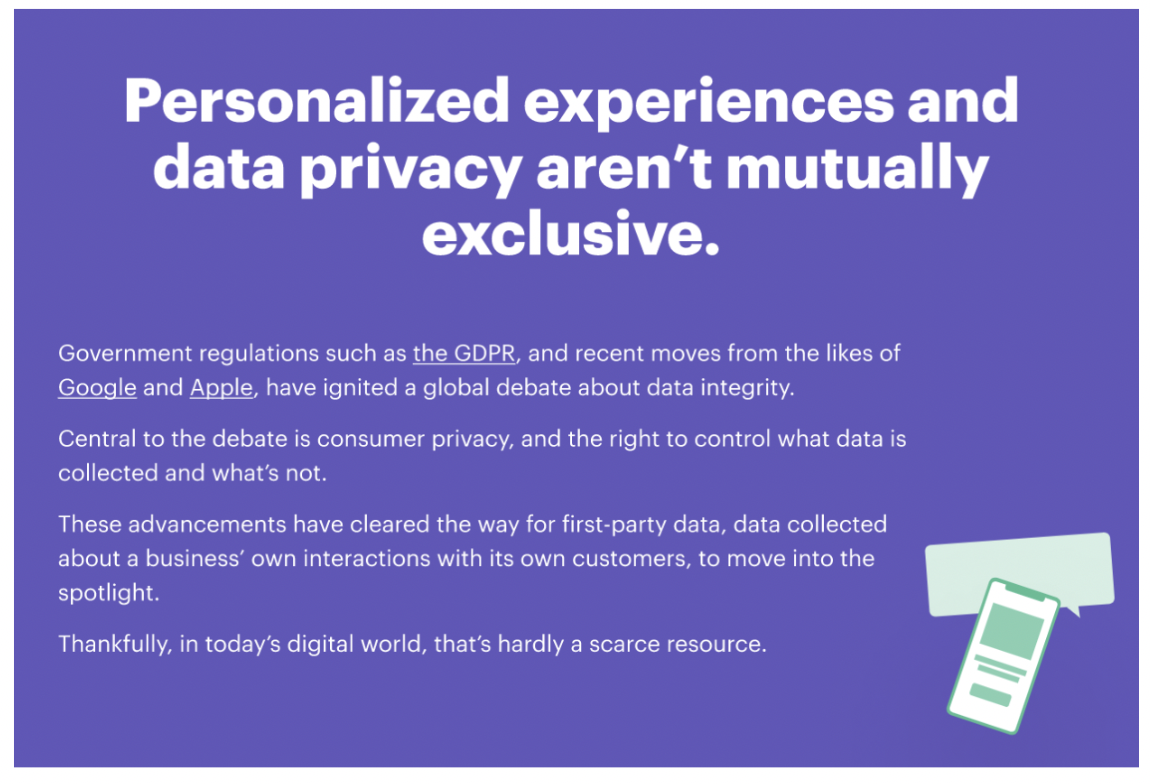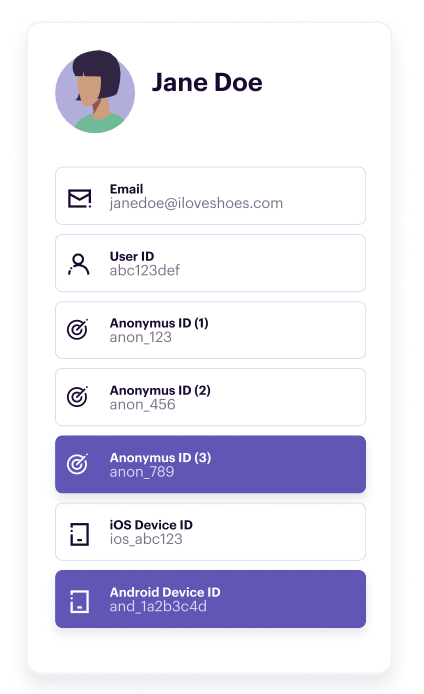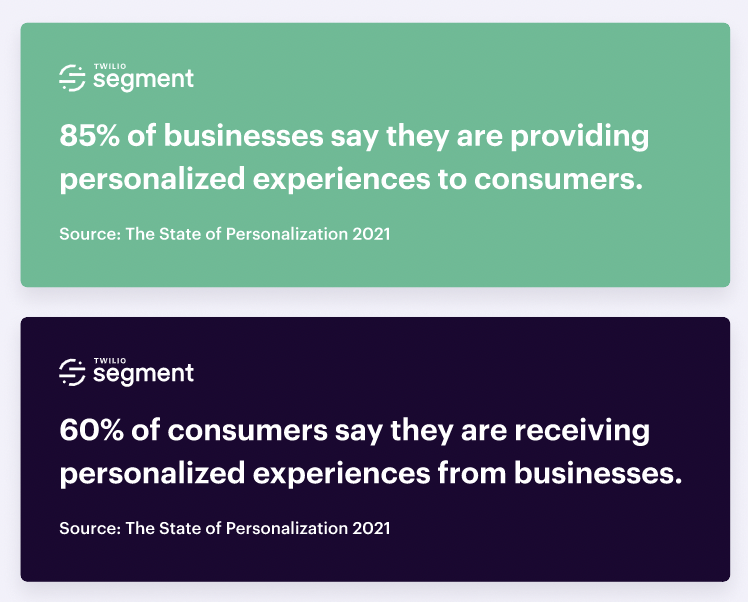Cookies, compliance and customer data: preparing for a privacy-first future
Learn how marketers can use first-party data collection while staying compliant and maintaining customer trust.
Learn how marketers can use first-party data collection while staying compliant and maintaining customer trust.
Twilio Segment Personas is now part of Segment’s Twilio Engage product offering.
Katrina Wong, VP Segment Marketing, and Sheryl Kingstone, Research Director at 451 Research, joined Kailey Raymond, Senior Manager Segment Enterprise Marketing, to discuss how to best prepare for a third-party cookieless future with a first-party data strategy.
Below are 5 takeaways from the discussion. (To watch the full webinar, head this way.)
There are major digital trends impacting the customer experience. Regulatory changes, the end of third-party cookies, and customer privacy concerns are all driving this transformation.
As the landscape of the internet changes to a privacy-first model, business leaders are being forced to reevaluate their strategies to remain compliant, maintain consumer trust, and stay competitive in this digitally-driven era.
But improving the customer experience isn’t just about technology. It’s also about breaking down organizational silos and having someone in a leadership role drive change. Survey data from 451 Research shows that 84% of digitally-driven organizations cite the importance of transforming to a real-time enterprise to meet customer demands, but only 12% of businesses are using real-time data in a data-driven way.
Over the past decade, data collection has turned into an industry where data brokers use third-party cookies to track users across the internet. That data is then sold to companies to offer personalized shopping experiences or create targeted ads. Consumers are no longer willing to have their personal data collected without consent.

Source: Cookies, compliance, and customer data: Navigating the future of data privacy
To illustrate this, imagine a brick-and-mortar experience. When shopping in a store, consumers are okay with that store knowing what they looked at and bought while in their store. That’s the equivalent of first-party data. The store the consumer shopped with has their information so they can improve or personalize the experience.
But most consumers would not be okay if the store down the street, which they’ve never shopped at, also knows what you looked at and bought in the store that you did visit because someone sold them your information. That would be the equivalent of third-party data.
As third-party cookies go away it raises the bar for marketers. Because marketers now have customer data platforms (CDP) to better understand their customers without relying on third-party cookies, they can capitalize on first-party data in a secure way.
Balancing personalization and customer privacy is possible. However, many marketers believe in the privacy-personalization paradox, a phenomenon in which customers have increasing demands for privacy and personalized shopping experiences at the same time.
The reality is the paradox doesn't have to exist. Knowing what data to collect and how to collect it is how marketers get the best experiences. As third-party cookies are phased out, more companies are transitioning from being reliant on third-party data to using first-party data.
Marketers can also build trust with consumers because they know how their data is being collected and used.

Source: Twilio Segment’s State of Personalization Report
Today’s digitally-driven organizations are putting greater emphasis on optimizing the customer journey as it relates to customer acquisition and retention. To provide the best customer service, businesses need the right information in real time so they can be responsive.
Linking their data sources and eliminating data silos to create a unified view of the customer is also key. Having this complete customer view gives businesses clear visibility into all activity touchpoints, allowing them to respond more effectively in real time when seeking to attract new customers or retain existing ones.
However, connecting a customer’s profile across online and offline channels can be complicated. Identifying a single customer who uses different User IDs depending on the platform (email, phone, social media, and SMS) poses a challenge. Being able to tie unknown to known data is essential. Learn how Twilio Segment does this through Identity Resolution.

Twilio Segment’s Personas creates a single customer profile from multiple user IDs
A complete view of customers empowers businesses to provide more personalization.
In Twilio Segment’s State of Personalization Report, 69% of customers say they appreciate personalization if it is based on data they shared with a business. The report also shows that customer expectations are outpacing their experiences, meaning 85% of businesses believe they're providing personalized experiences but only 60% of customers think so.

Source: Twilio Segment’s State of Personalization Report 2021
An increasing number of companies want to modernize their business, with many shifting to a direct-to-consumer model. First, they need to know more about their customers by unifying their data across the entire enterprise. And to increase customer loyalty, they need to create relevant experiences in as real time as possible by adopting a customer data platform.
A CDP provides a way for businesses to create more personalized experiences by enabling them to collect data points from interactions with their own customers. In essence, it allows businesses to respect customer privacy while gathering first-party data for personalization.
Businesses need to understand that a lack of transparency is going to inhibit customer loyalty. Transparency is crucial for building customer trust. Consumers spend 25% more with trusted brands, so that’s where an investment in gathering consented data using a CDP pays off.
However, not all customers are alike. It’s important to understand the different personas when it comes to data preferences. Different generations have varying degrees of comfort.
According to data from 451 Research, millennials are the most trusting because they know how to protect themselves online. Younger generations haven’t yet gained those skills, and for older generations, while they’re a bit more trusting of businesses in general, that trust doesn’t always carry over into digital experiences.
Businesses need to be stewards of consumers’ digital identities. To stay ahead of the curve, companies should invest in improving customer experiences and engagement. The minute there’s news in the industry of a data breach, consumers start to pull back and become less trusting. Individuals are becoming more educated about what it really means for businesses to be transparent and are no longer automatically opting-in to accept all cookies on a website.
Looking to dive deeper into this topic? Download our ebook: Cookies, compliance, and customer data: Navigating the future of data privacy.

Our annual look at how attitudes, preferences, and experiences with personalization have evolved over the past year.